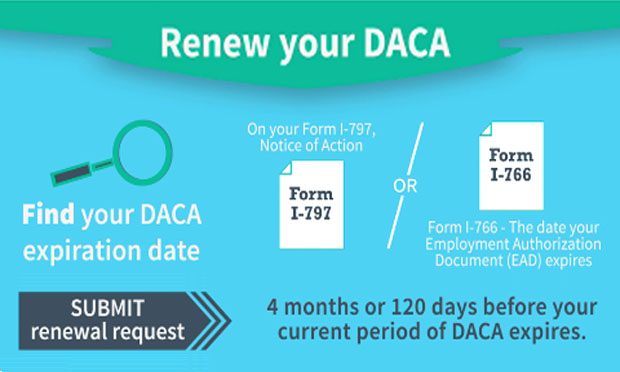
From the Scholars Strategy Network, written by Jaein Josefina Lee, Carolina Valdivia Ordorica, Kristina Brant, Harvard University
In 2012, President Barack Obama launched the Deferred Action for Childhood Arrivals program to provide temporary work authorization and protection from the threat of deportation to undocumented young adult immigrants who had first been brought to the United States as children. Originally, Deferred Action protections were given only to immigrants under 31 years old who migrated to the U.S. before June 15, 2007. However, on November 20, 2014, an additional Obama order extended the length of protections from two to three years, removed the age limit, and included those who arrived before 2010. Shortly after this expansion was announced, it was blocked by a federal district court in Texas. The status of expansion now rests with federal appellate courts; but meanwhile, we have much to learn about the impact of the original Deferred Action program on undocumented young adults.
Directed by Roberto G. Gonzales at Harvard University, the National UnDACAmented Research Project is the first effort to collect extensive data on the effects of the Deferred Action program. In 2013, an online survey probed the educational, labor market, health, and civic engagement experiences of 2,684 young adult immigrants. An earlier SSN brief by Gonzales outlined preliminary findings that Deferred Action has indeed helped undocumented young adults become more fully incorporated into the U.S. economy and society. Here, we consider how benefits vary for subgroups within the undocumented population.
Who benefits the most?
Deferred Action has opened many new opportunities, but some recipients benefit more from this temporary legal status than others.
- Undocumented youth with bachelor’s degrees were about 1.5 times more likely than those without college degrees to obtain new jobs, increase their earnings, and secure internships.
- Men were more likely than women to obtain credit cards and driver’s licenses.
- Younger recipients were more likely to get a new job and open a first bank account, while older recipients were more likely to obtain a driver’s license and health care.
- Recipients whose parents had earned a bachelor’s degree and those from middle/upper-income families were more likely than those of lower status to take advantage of new opportunities.
- Compared to Mexican immigrants, other Latino and Caribbean immigrants were more likely to increase their earnings, open bank accounts, and obtain drivers’ licenses, while Asians and Pacific Islanders were more likely to find internships, open bank accounts and obtain credit cards.
Connections to communities
Nine out of ten Deferred Action recipients in the survey reported receiving some type of assistance from community organizations or legal clinics in their application process.
- Undocumented youth who were already connected with community organizations often turned to them, while those lacking these initial connections looked to private attorneys.
- Deferred Action recipients who were previously connected with organizations more readily gained benefits than youth without ties — these recipients were 1.2 times more likely to find new jobs and 2.2 times more likely to obtain internships.
Who is not applying?
According to the Migration Policy Institute, an estimated 1.2 million U.S. residents were immediately eligible for the original Deferred Action program. Yet as of December 2014, only 638,897 individuals had submitted applications and been approved by immigration authorities. To find out why only half of those eligible are utilizing their benefits, we analyzed answers from the 244 survey respondents who met the Deferred Action requirements but did not apply.
- Compared to respondents who have applied and gained benefits, non-applicants have less schooling and work longer hours. They are also more likely to have children, but are less connected to schools and institutions.
- Asked why they had not applied, one in ten respondents said they did not know how and 15% said they were fearful of sending personal information to the government. In addition, one-third of respondents said they are waiting for better options in future immigration reforms.
- Among respondents open to applying, 43% said they could not afford the application fee or payments for legal services, and 22% said they were missing necessary paperwork.
Implications and recommendations
Even as many push for expansions of Deferred Action, our research reveals the unequal impact of the existing program. Roughly half of those eligible still have not applied at all, and young people from relatively privileged economic and ethnic backgrounds are the ones gaining the most from the program’s benefits.
The data presented here suggest clear policy lessons. To reach young adults who are eligible but have not yet applied for Deferred Action, government officials should collaborate closely with community organizations to spread awareness of the program and help eligible young adults prepare their applications. Because high application costs can be a barrier, scholarships or loans may need to be offered by community groups and local foundations. In addition, community organizations should make extra efforts to inform Deferred Action recipients about the full range of new opportunities available to them — focusing especially on subgroups such as women, younger immigrants, and those from lower-income or Mexican backgrounds. Clearly, renewed efforts must be taken to reach those undocumented young adults who are the least likely to take advantage of the many new opportunities Deferred Action offers for full participation in American society
Related research: Research and data for this brief were drawn from the National UnDACAmented Research Project.
The author is a member of the Scholars Strategy Network, where this post originally appeared.
Keywords: youth, immigration, Latin America, Mexico, research brief
